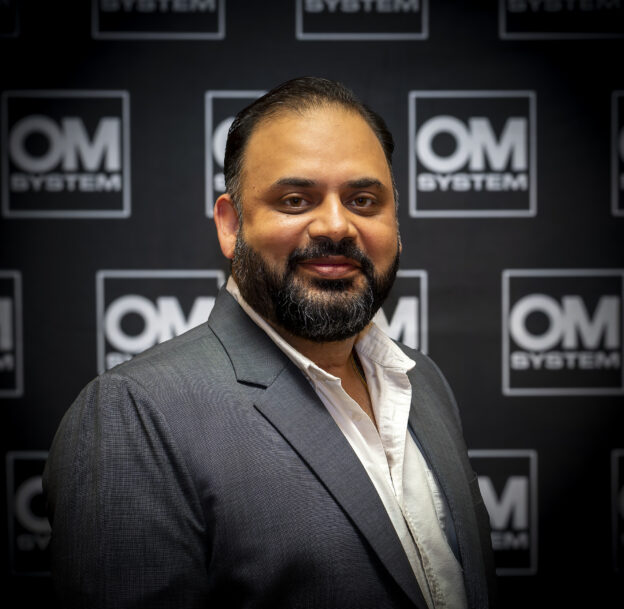As OM System re-enters India, they face a significant uphill battle ahead of them. Known previously as Olympus, the brand is known for sticking to its ethos of innovating in the Micro Four Thirds space. Bhavya Desai spoke to Vivek Handoo, Vice President – Head of APAC/Managing Director, OM SYSTEM about what’s the road ahead. Excerpts:
Olympus decided to exit the camera business in 2020. What prompted this decision?
At that time, Olympus’ India operations were largely focused on the medical division. The company aimed to be a clear leader in the medtech space, and that strategic direction led to selling off the imaging business. Before that, in India, continuing the imaging operations wasn’t viable as the company wanted to prioritise its medical business — that’s when we exited the market.
What are the challenges you foresee as you re-enter the Indian market?
A major challenge is perception. Over the last few years, there’s been an overwhelming push for full-frame cameras. Brands like Sony and Canon have built strong narratives around full-frame systems. We’ve always stayed true to our Micro Four Thirds (MFT) philosophy — compact, lightweight cameras that perform exceptionally outdoors. However, in India, the “bigger sensor is better” mindset is still strong. Educating consumers that MFT can produce professional results will be key.
The second challenge is brand recognition. We’re no longer “Olympus”; we’re now “OM System.” A lot of people in India, they read OM System as Om system, which is an auspicious name within the country – so they think that it’s a local business and don’t realise it’s the same Olympus, even though we carry the same DNA and heritage, it’ll take time and effort to establish OM System as the new identity.
Can you still use the Olympus name?
We have rights to use “Olympus” until the end of this year, but all new cameras and lenses since the transition carry OM System branding. By the end of next year, we’ll completely phase out the Olympus name.
Most of the world has shifted to mirrorless full-frame or APS-C systems. Do you think MFT will require more education for Indian consumers?
Absolutely. The Indian market is heavily driven by wedding photography, where full-frame dominates. That’s why we’re positioning ourselves clearly in the outdoor photography niche — wildlife, macro, travel, and landscapes — where our system truly excels.
Our products are compact, rugged, and technologically advanced. In countries like Australia and Japan, OM System is seen as a strong alternative to leading brands because we’ve been able to communicate these strengths effectively. We’re taking the same approach in India, even if it takes time.
What would you say is OM System’s USP?
Three things stand out:
- Form factor: Our smaller sensor allows compact cameras and lenses without compromising quality. For example, our new 50-200mm lens is a fraction of the size and weight of its full-frame counterparts.
- Weather sealing: Our bodies are IP53 rated, they’re dustproof, rainproof, freezeproof, and shockproof — perfect for the outdoors.
- Handheld stability: We pioneered in-body image stabilisation and continue to lead in it. Most of our gear can be used handheld, eliminating the need for a tripod even in challenging environments.

What price range are you targeting in India?
Our lineup starts below ₹50,000 and goes up to ₹7-8 lakh for professional lenses. Our primary focus, however, is the mid-segment — cameras priced between ₹1-2 lakh — where we see the most growth potential.
What is your current product portfolio?
We currently offer six camera bodies, around 32 lenses, several binoculars, and a few audio recording devices. It’s a comprehensive ecosystem for anyone serious about photography.
Will all these products be available in India?
Yes, they’re already available through our national distributor, Creative Newtech, a Mumbai-based company. We currently have around 20–30 dealers onboard and aim to reach 60–80 across major Tier 1 and Tier 2 cities. While we won’t be in every retail outlet, we’re focused on partnering with stores that understand our vision and products.
What are your near-term and long-term objectives for OM System in India?
In the short term, we’re focused on making our full lineup available nationwide, onboarding key retailers, and working with photographers, influencers, and ambassadors who can showcase our products’ capabilities. We’ll also conduct workshops to help consumers experience our cameras firsthand.
In the long term, our goal is to become a clear leader in outdoor photography within the Indian market — a segment that’s growing rapidly worldwide. The Indian camera industry is valued at around $750–850 million, and we see significant growth potential in the coming years.
Which international markets are performing well for OM System?
Japan remains our strongest market, followed by strong performance in China, Australia, and several European countries like Germany and the UK. We’re also seeing rapid growth in the US, Indonesia, and Thailand. Interestingly, after years of smartphone dominance, the global camera market has rebounded over the last four years — and is projected to keep growing.
With the festive season around the corner, what are your plans for India?
We’re introducing several attractive pricing and bundle offers for Indian customers through the festive period, which is from Diwali to New Year. Our pricing will be among the sharpest globally, as this phase is about building brand presence and consumer trust rather than profits.
Are there plans for OM System brand stores in India?
Standalone brand stores may not be immediately viable, but we’re actively pursuing shop-in-shop concepts within leading camera stores. These spaces will allow us to create an OM System experience zone. While we might explore one or two flagship stores in major metros, our priority is visibility through these focused, interactive shop-in-shop setups across India.
Will these be located in big retail chains or specialised camera markets?
Primarily in camera markets. The technical expertise and hands-on experience customers expect are best provided by specialists. Entry-level models will, of course, be available online and through regular retail.
Do you have any market share goals for the near future?
Internally, we’re aiming for around 5% market share in the next couple of years. Given that roughly 70-75% of the Indian market revolves around weddings — which isn’t our focus. We’re targeting the 20-25% segment centred on outdoor, wildlife, and travel photography, which is growing faster than any other category.
Who is your primary customer base in India?
Our focus is on content creators, travel photographers, and outdoor enthusiasts. Post-COVID, many younger consumers have taken up photography as a creative pursuit. With travel booming and social media content creation on the rise, we’re targeting users who value portability, durability, and versatility — not just professionals but also serious hobbyists.
And in terms of video capability?
All our cameras are video-capable, but we recognise the demand for more advanced video features. We’re working on upcoming products specifically tailored to content creators with enhanced video performance while maintaining our strengths in photography.
You mentioned channel partners and e-commerce — what’s the strategy there?
It’s a dual approach. Channel partners are essential because Indian consumers still prefer to touch and try before buying. At the same time, e-commerce will play a crucial role once our Indian subsidiary is established. We’re also creating a network of ambassadors and workshop leaders across the country, giving users a chance to experience our products hands-on.
Workshops will focus on outdoor genres — wildlife, travel, street, and macro — where participants can test the equipment themselves. We believe our core strengths of portability and stability are best appreciated through direct experience, not just online listings.
When do you expect the Indian subsidiary to be operational?
We expect to have our own subsidiary within the next 12–18 months. Initial hiring will happen through third-party arrangements until the entity is formally set up.
Anything you’d like to add for our readers?
We’re genuinely excited about India. It’s our number one focus market globally right now. You’ll see a lot more engagement from us through events, collaborations, and retail presence. India’s creative energy and fast-growing photography community make it a perfect fit for OM System. We look forward to giving Indian photographers the tools to explore the outdoors with freedom, confidence, and innovation.



